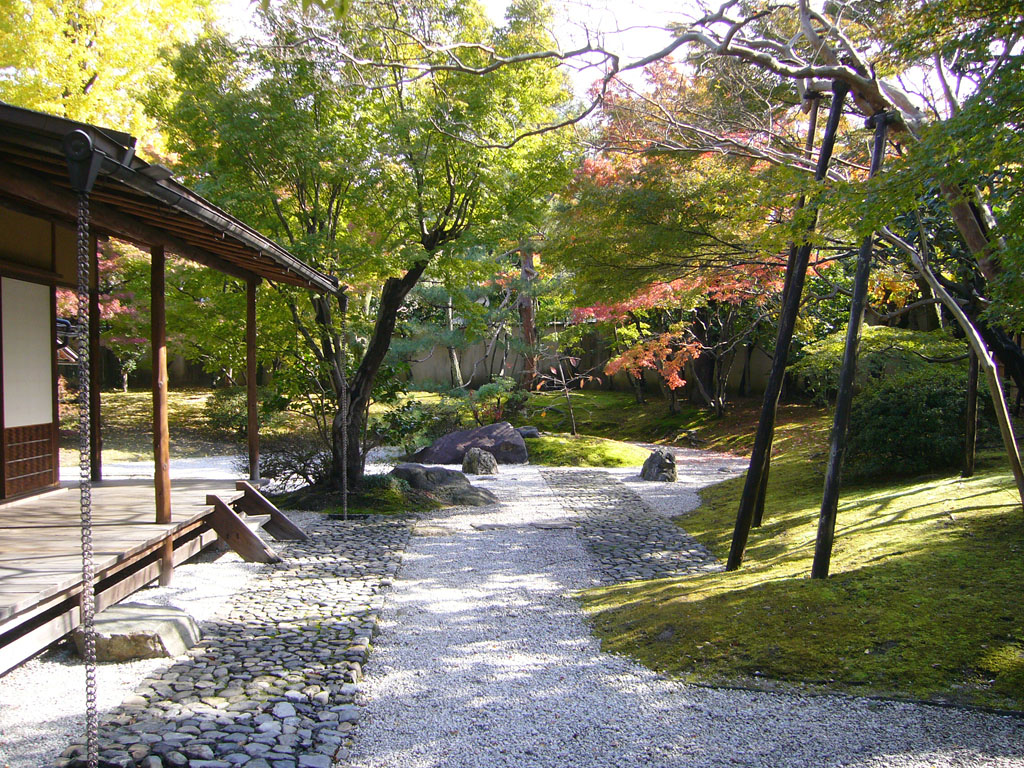

teahouse Tan'an / Kyoto National Museum
The Kyoto National Museum's Teahouse “Tan'an” is a sukiya-style building in the tradition of the court noble culture of Kyoto in the early Edo period, and was donated by tea ceremony enthusiast Mr. Ueda Shinichiro in 1958. Originally located on the south side of the Meiji Ancient Capital Museum, it was moved to the museum's east garden in 1966. At that time, the thatched roof and shingle roof were replaced with copper shingles, and the garden and an outbuilding behind the water shed were also improved. Today, the “Tan'an” is open to the public for tea ceremonies and other events. The building consists of an eight-tatami-mat shoin-style tatami room, with an open-air porch in front, an entrance on the left side, and a water room in the rear. The space facing the garden, combined with the combination of the light roof and the subdued color scheme of the black wood, shows the influence of Katsura Rikyu. On the right side of the main house is a three-tatami-mat tea ceremony room, called “Tan'an,” which is said to have been modeled after the Daitokuji pearl hermitage “Teigokuken” favored by tea master Kanamori Munekazu. The room arrangement is honbakudai-mekiri (dewarashi), and the lower floor has an upper structure with a stile and rail on the side. The “Tan'an” is quietly located in the garden of the Kyoto National Museum, offering tranquility and traditional beauty to visitors. Its sukiya-style design and historical background are valuable for understanding Japanese tea ceremony culture and architectural styles.